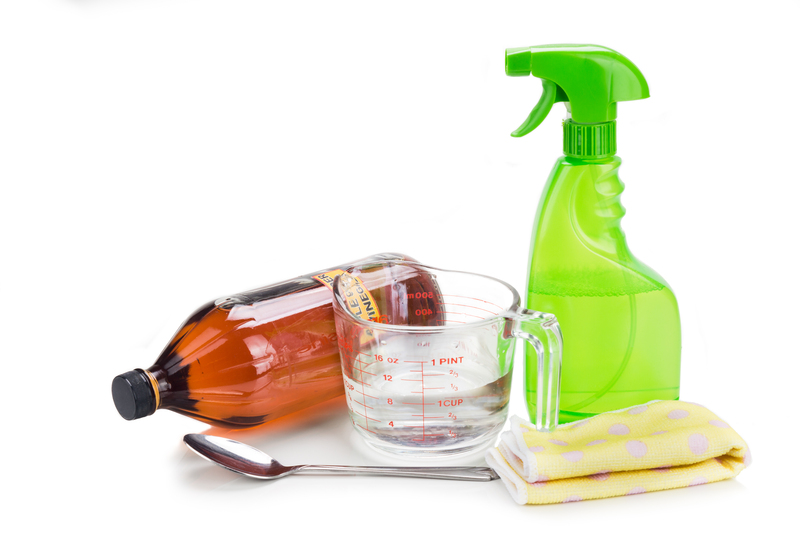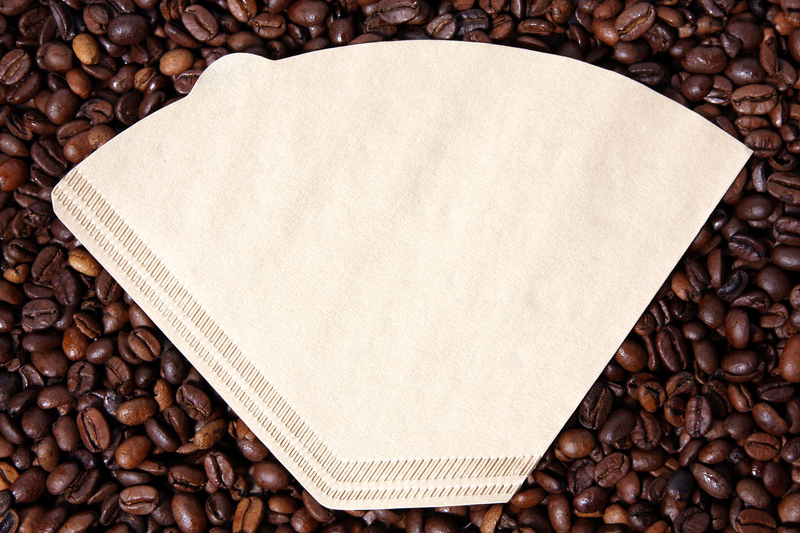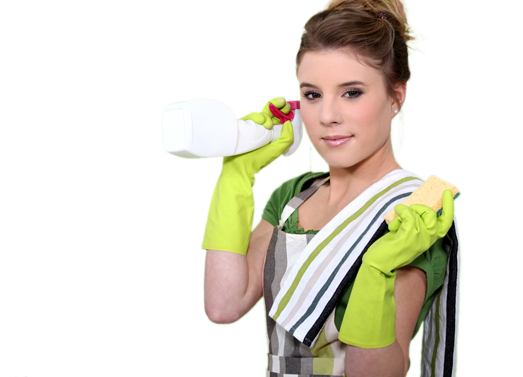Revealing the Techniques for Perfect Curtain Cleaning
Posted on 06/06/2025
Revealing the Techniques for Perfect Curtain Cleaning
Perfect curtain cleaning is not just about aesthetics; it's essential for maintaining a healthy home and prolonging the life of your window dressings. Curtains function as barriers that collect dust, allergens, and odors, but they can quickly lose their charm if not properly cleaned. In this comprehensive guide, we will reveal highly effective curtain cleaning techniques, discuss the best way to maintain your curtains, and ensure that your draperies remain as beautiful as the day you bought them.

Why Is Curtain Cleaning Important?
Many homeowners overlook curtain cleaning as part of regular household chores. However, cleaning curtains perfectly offers several essential benefits:
- Allergen reduction: Curtains easily trap dust, pollen, and pet dander. Regular cleaning reduces allergens and improves indoor air quality.
- Odor removal: Fabrics absorb cooking smells, smoke, and other household odors. Clean curtains help maintain a fresh-smelling home.
- Preserving fabric quality: Dirt particles can cause fabric fibers to break down, shortening curtain lifespan.
- Enhances room appearance: Sparkling clean curtains instantly uplift your home's interiors.
Understanding Your Curtain Fabric
Before starting with curtain cleaning techniques, it's vital to know your curtain's fabric composition. Care instructions can largely differ based on the material:
- Cotton and linen: These are sturdy but tend to shrink if exposed to high temperatures.
- Velvet and chenille: Require delicate handling and often need professional cleaning.
- Silk: Extremely delicate, making them suitable for gentle hand-washing or dry-cleaning.
- Synthetic fibers (such as polyester): Durable and typically machine-washable.
For perfect curtain cleaning results, always check the care label first. If unsure, err on the side of caution or consult a professional cleaner.
Preparation for Curtain Cleaning
Proper preparation leads to the best outcome. Here are essential steps before cleaning:
- Dust or vacuum: Always remove surface dirt using a vacuum with an upholstery attachment or a handheld duster.
- Spot test: Apply cleaning solution on a hidden section of the fabric first to check for colorfastness.
- Remove hardware: Take down hooks, rods, and rings to prevent rust stains and snagging during cleaning.
Top Curtain Cleaning Techniques for Outstanding Results
1. Machine Washing Curtains: The Modern Approach
Machine washing is a popular and effective method for most modern curtains--particularly cotton, linen, or synthetic blends. Here is how to machine wash curtains to perfection:
- Check for compatibility: Confirm that your curtain's care label allows machine washing.
- Select the right cycle: Use the gentle or delicate wash setting to prevent fabric damage.
- Use mild detergent: Heavy-duty detergents can fade colors and degrade fabric fibers.
- Wash in cold or lukewarm water: Hot water can cause shrinkage or fading.
- Do not overload: Curtains need space in the drum to wash and rinse properly.
After washing, shake out wrinkles and hang to air dry. Avoid tumble drying if possible, as heat can damage the fabric and cause shrinkage.
2. Hand Washing for Delicate Drapes
Some materials, such as silk and intricate lace curtains, require special care--making hand washing the preferred curtain cleaning technique. Follow these steps for gentle hand-washing:
- Fill a bathtub or large basin: Use cold or lukewarm water with a small amount of gentle detergent.
- Immerse and soak: Let the curtains soak for a few minutes to loosen dust and grime.
- Gently agitate: Swish the fabric through the water, avoiding rough scrubbing or wringing out.
- Rinse thoroughly: Drain soapy water and refill with clean water multiple times until all detergent is removed.
- Dry carefully: Hang the curtains outside away from direct sunlight, which can fade colors.
Hand-washing ensures completely clean curtains without risking damage to the fibers or embellishments.
3. Steam Cleaning: The Fast and Hygienic Method
Steam cleaning is an excellent curtain cleaning method for heavy or attached draperies that are hard to remove. This technique also:
- Kills dust mites and bacteria with high temperatures.
- Loosens and dissolves accumulated dust and stains.
- Refreshes the fabric and removes odors without harsh chemicals.
How to steam clean curtains:
- Use a garment steamer or hand-held fabric steamer.
- Work from top to bottom, keeping the steamer a few centimeters from the fabric.
- Move slowly, ensuring every section is treated without soaking the fabric.
Regular steaming maintains a clean appearance and is gentle enough for most fabric types.
4. Dry Cleaning: The Professional Touch
Certain curtain fabrics, such as velvet, chenille, wool, and some silks, must be dry-cleaned only. Dry cleaning uses special solvents, not water, making it ideal for delicate and lined curtains (curtain dry cleaning techniques).
If the care instructions call for dry cleaning, always adhere to them. DIY cleaning for these materials can permanently damage your curtains. Take your curtains to a reputable dry cleaner, specifying the fabric type and any specific stains that need attention.
Targeting Stubborn Curtain Stains
Even with regular curtain cleaning, accidents happen. Stubborn stains, such as those from wine or grease, demand swift and careful action:
- Act quickly: Blot (never rub) fresh stains with a clean, dry cloth to absorb excess liquid.
- Use appropriate cleaners: For grease, apply a cornstarch or talcum powder paste, let sit, then brush off and wash.
- Spot clean: Dip a cloth in soapy water and dab at the stain. Rinse the area afterward to remove soap residue.
- Test hidden areas: Always test any stain remover on a concealed part of the curtain first.
Persistent stains on delicate fabrics may require professional curtain cleaning solutions.
Routine Maintenance for Lasting Freshness
Perfect curtain cleaning doesn't end after a single wash. Regular maintenance ensures ongoing beauty and cleanliness:
- Vacuum weekly: Use an upholstery nozzle to remove dust and periodically shake curtains outside.
- Rotate curtains: Swapping curtain panels prevents localized fading and wear from sun exposure.
- Address spills promptly: Quick stain removal makes cleaning easier and more effective.
- Air out curtains: Open windows occasionally to prevent moisture build-up and mildew.
The Benefits of Professional Curtain Cleaning Services
Sometimes, achieving perfectly cleaned curtains means calling in the professionals:
- Expertise: Professional cleaners have specialized equipment and knowledge to deal with all curtain types and stains.
- Deep cleaning: Removes embedded dirt, bacteria, and allergens that regular cleaning might miss.
- Convenience: Saves you time, especially for heavy or high-maintenance draperies.
- Prolongs curtain life: Gentle, appropriate cleaning methods prevent premature fabric wear.
If your curtains are delicate, lined, or too large to fit in your washing machine, professional cleaning is often the best route for curtain cleaning perfection.
DIY vs Professional Curtain Cleaning: Which is Best?
Advantages of DIY Curtain Cleaning
- Cost-effective, with minimal investment in supplies.
- Convenient for routine upkeep and simple fabrics.
- Allows for immediate response to spills and stains.
Advantages of Professional Curtain Cleaning
- Perfect for intricate, large, or delicate curtains.
- Removes stubborn stains and allergens thoroughly.
- Prevents accidental shrinkage, distortion, and color loss.
The choice depends on your curtain fabric, condition, and available time. If you want absolutely spotless curtain cleaning for luxury drapes, professional help is worth considering.
Additional Tips for Immaculate Curtain Care
- Avoid harsh chemicals: Bleach and strong detergents can weaken fabric fibers and cause discoloration.
- Hang while damp: Letting curtains air dry on the rod helps naturally release wrinkles and maintain shape.
- Iron with care: If ironing is necessary, use a low setting and place a cotton cloth over the curtain to avoid direct heat.
- Use curtain liners: Liners protect decorative curtains from dust and grime, reducing the frequency of deep cleaning.
Common Curtain Cleaning Mistakes to Avoid
To achieve the best curtain cleaning results, avoid these frequent pitfalls:
- Ignoring care labels: Not following fabric instructions leads to shrinkage and damage.
- Overloading the washing machine: Crowding prevents thorough cleaning and causes stubborn creases.
- Using excessive water or detergent: This leaves residue that attracts more dirt over time.
- Skipping regular maintenance: Letting dust and grime build up makes deep cleaning much harder.

Frequently Asked Questions About Curtain Cleaning
How often should I clean my curtains?
For best results, give curtains a deep clean every 6 to 12 months, while vacuuming or shaking them out weekly reduces daily dust accumulation.
Can I use regular laundry detergent for curtain cleaning?
Preferably, use mild or specially formulated detergents to preserve the quality and color of your curtains. Avoid chlorine bleach unless the care label states it is safe.
What if my curtains are very heavy or can't be removed?
For heavy or fixed draperies, vacuum regularly and use a handheld steamer for a more thorough clean. Or hire a specialist curtain cleaner for a professional result.
Conclusion: Achieve Flawless Results with the Right Curtain Cleaning Techniques
Immaculate, fresh curtains are within everyone's reach. By understanding your fabric, following the correct curtain cleaning techniques, and keeping up with regular maintenance, you can preserve your drapes' charm and keep your indoor air healthy. Whether you prefer DIY curtain cleaning or opt for professional services, the real secret lies in consistent care and gentle handling.
Don't wait for grime to dull your beautiful drapes! Put these tips into practice and enjoy the rewards of picture-perfect, hygienic curtains all year round.




